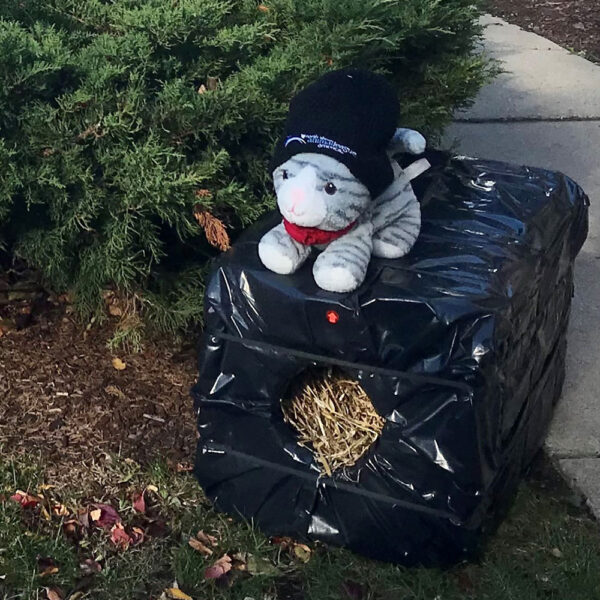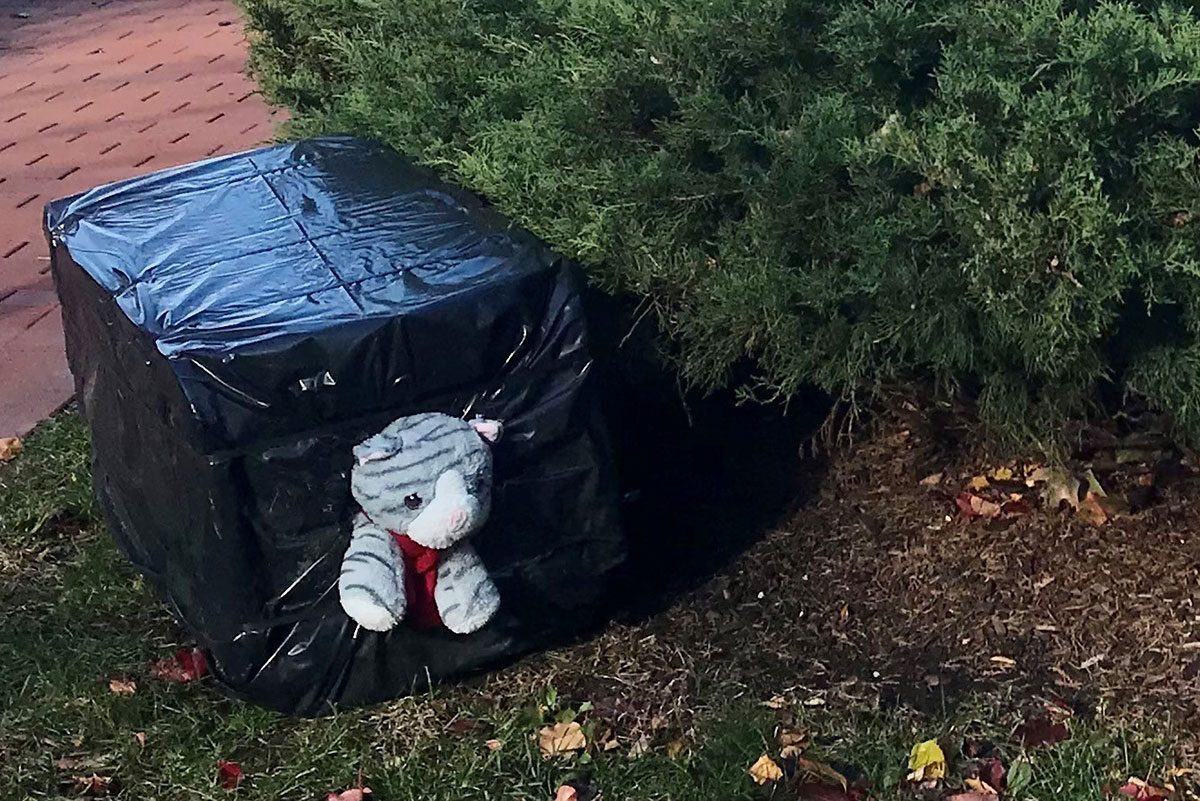Winter is a difficult time of the year for Community Cats; it’s cold, food and water are scarce, and a warm, dry place to rest their weary bones can be hard to find. Providing some sort of comfort for these cats — whether it be a bowl of food, a feral house to call their own or a fresh bowl of water — will go a long way to make their life so much easier.
A warm, safe place is always welcomed and a feral house is easy to build. Directions on how to build a feral house can be found below. Just in case you’re not handy or don’t have the time, they can also be purchased online. We also carry Joe’s Fish Box Feral Cat Houses at a low cost at our Port Washington, NY Adoption Center. You can learn more by contacting our Community Outreach Department at [email protected].

Here are some tips to creating a perfect cold weather home for your feral friend:
- A feral house should only be lined with straw. This material will keep the cats warm and will not rot. It is important to change the straw out every few months. Other materials such as hay or blankets will rot, become moldy, hold moisture and will render the house useless.
- A feral house should be kept in a low traffic area away from people and other animals. If in a private yard, then choose a corner that no one passes through and has some bushes for covering. If it is a public space, then look for the most inconspicuous place away from sidewalks and people. The house should be hidden in bushes and among trees so it doesn’t stand out. If you are going to place the house on private property that doesn’t belong to you such as a business or a neighbor, please get permission first! Also, understand they may not want this responsibility, so ensure them you will be responsible for upkeep and care.
- Clear a pathway to the feral house for the cat after any snowstorms to ensure he has easy access to get in and out.
- Set up a feeding station that has both food and fresh water. The feeding station should not be near the feral house or a place a feral sleeps. You don’t want to attract other wildlife or predators to the feral’s home.
- A feeding schedule is important. The cat(s) you care for will learn to come to eat at specific times, and it will help you get to know who you are caring for, see if new cats arrive, if a cat is missing, and determine if any cats are injured or ill.
- After 30 minutes to an hour the food should be removed. Please keep the area clean even if it’s your own property; you don’t want to attract predators that can be dangerous to your feral friend. Also, not everyone understands the plight of the Community Cat so you don’t want to give them a reason to complain. It can be an opportunity to educate! See if you can enlist them to help Community Cats!
- Extra food during the cold weather is very important. Feeding extra wet food is ideal, and it gives the cat(s) extra protein to keep their energy levels up. It can be expensive however, so if you’re unable to provide extra wet, then extra high-quality dry food will help. Please keep in mind, food freezes when it gets very cold, including the dry food, so you will need to keep an eye on it.
- Fresh water should be provided throughout the day and changed as it freezes.
- Most importantly, if the cat(s) you’re taking care of don’t have an ear notch, then please reach out to your local humane society, animal shelter or veterinarian for TNR (Trap, Neuter, Return). Help put an end to the overpopulation of Community Cats!

Building a Feral House (Styrofoam cooler method)
Many people order food online these days, so this is a great way to repurpose those coolers!
- Inspect the cooler. Any cracks should be glued together with an adhesive that sticks to Styrofoam, or use duct tape.
- To make entranceways, take a bowl and outline it where you want to put your openings.
- Cut the holes out with a thin serrated edge. When pushing the pieces out, be gentle or you can break the wall of the shelter. At this time, decide whether you want two entranceways or one. If it is a smaller cooler, one entrance way will keep it warmer, but it depends on where the house will be located and if there is the danger of unfriendly animals climbing in the one entranceway.
- If you have extra Styrofoam, cut it to fit into the bottom of the cooler so you can give it a thicker floor and help it last longer.
- The lids should be taped all the way around, as well as around the entire cooler.
- Tape black garbage bags around the entire cooler to make it waterproof.
- Add straw.
- Weigh the cooler down with a piece of wood so it doesn’t blow away or fall over.
- If you have several coolers, you can tape two together and cut matching holes in the sides to make one big house, then cover the whole house with black garbage bags.


